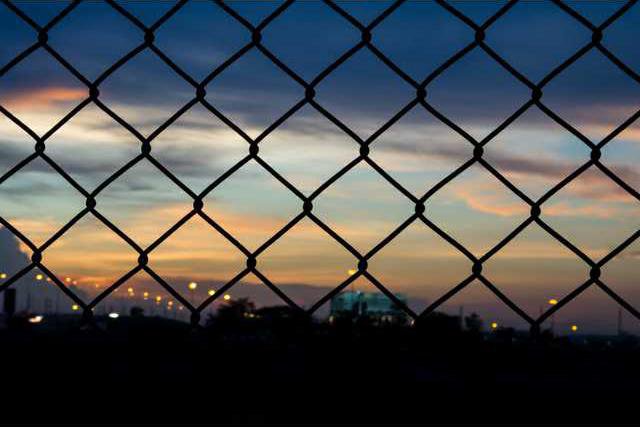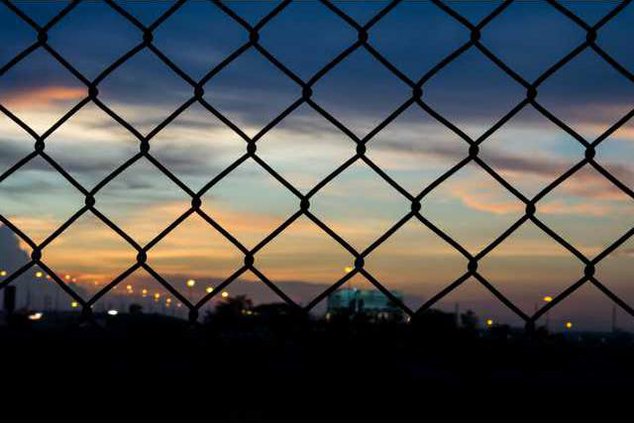Family immigrant detention centers, which serve as holding points for undocumented women and children caught crossing the border, have come under fire in recent weeks.
Amid growing pressure to change detention policies and a class-action lawsuit challenging conditions for families detained in facilities in Arizona, federal immigration officials announced plans last month to institute a panel tasked with reviewing conditions at detention centers.
As part of the effort, Jeh Johnson, secretary of the Department of Homeland Security that oversees the U.S. Immigration and Customs Enforcement agency, toured a facility in Karnes City, Texas, on Monday, according to a Los Angeles Times report.
His visit coincided with the release of a New York Times story that provided an incriminating account of immigrant detention centers, where undocumented immigrants caught sneaking into the country are held, sometimes indefinitely, until their fate is decided in court.
The Times report adds to a long list of evidence, compiled by Amnesty International, against immigrant detention centers, which critics have compared to prisons.
In much of the country, undocumented immigrants are detained in prisons, but in some states, namely those on the southern border, specific facilities exist to exclusively house migrants and their families. ICE manages 15 detention centers, three of which are specifically for families, according to a Detention Watch Network report.
Detainees are women and children seeking asylum, usually from violence back home, according to another Times story. Personnel within ICE say that presence at the centers ensures attendance at court hearings, speeding up the process.
But an influx of immigrants from Central America last summer has bogged down the process, often leaving women and their children without a timeline for release, according to the Los Angeles Times.
Its shocking and abhorrent that we have 2-year-old kids in prison, immigration rights advocate Andrea Cristina Mercado said. What I think is so appalling about holding these women and children behind bars is that the data shows that asylum seekers, if theyre released into the community, will come to their hearings.
A story in the Marshall Project, a nonprofit news outlet covering Americas criminal justice system, revealed some of the abuses that take place in a detention center in Texas.
The South Texas Family Residential Center, located in a town of fewer than 4,000 called Dilley, will be the largest detention center in the country when its completed, and is one of the three specifically designated for families. Opened in December, it currently holds 800 immigrants with the capacity to detain three times that many when its completed.
The people living in the center are called residents, according to the Marshall Project story, though barb-wired fencing keeps them from escaping. The facilities are required, under ICEs family residential standards, to provide a minimum level of comfort to the immigrants. At South Texas Family Residential Center, that means a basketball gym, a school for the children, a state-of-the-art medical clinic and a beauty salon, as stated in the Times.
Officials from ICE say that the facilities are well-equipped to house women and children and provide them security while they await court decisions. Plus, they may prove to be an effective deterrent to foreigners thinking about entering the country illegally.
"We want to send a message that our border is not open to illegal migration, and if you come here, you should not expect to simply be released, Johnson said at the South Texas Family Residential Center's opening last winter, according to the New York Times.
Despite the uncertainty of a prolonged detention, the women inside the facilities most of whom didn't know that the centers existed when they crossed the border admit they are not treated badly, though the realities of life inside a detention center weigh on them.
I would be lying if I said they didnt treat us well, Y.G.G., who has been at the Texas center since February, told the Times. But I cant sleep because I have such a headache from thinking about being trapped in here. My children get so sad, and they ask me, Mama, when will we get out of here? After all they went through, they are traumatized again.
Amid growing pressure to change detention policies and a class-action lawsuit challenging conditions for families detained in facilities in Arizona, federal immigration officials announced plans last month to institute a panel tasked with reviewing conditions at detention centers.
As part of the effort, Jeh Johnson, secretary of the Department of Homeland Security that oversees the U.S. Immigration and Customs Enforcement agency, toured a facility in Karnes City, Texas, on Monday, according to a Los Angeles Times report.
His visit coincided with the release of a New York Times story that provided an incriminating account of immigrant detention centers, where undocumented immigrants caught sneaking into the country are held, sometimes indefinitely, until their fate is decided in court.
The Times report adds to a long list of evidence, compiled by Amnesty International, against immigrant detention centers, which critics have compared to prisons.
In much of the country, undocumented immigrants are detained in prisons, but in some states, namely those on the southern border, specific facilities exist to exclusively house migrants and their families. ICE manages 15 detention centers, three of which are specifically for families, according to a Detention Watch Network report.
Detainees are women and children seeking asylum, usually from violence back home, according to another Times story. Personnel within ICE say that presence at the centers ensures attendance at court hearings, speeding up the process.
But an influx of immigrants from Central America last summer has bogged down the process, often leaving women and their children without a timeline for release, according to the Los Angeles Times.
Its shocking and abhorrent that we have 2-year-old kids in prison, immigration rights advocate Andrea Cristina Mercado said. What I think is so appalling about holding these women and children behind bars is that the data shows that asylum seekers, if theyre released into the community, will come to their hearings.
A story in the Marshall Project, a nonprofit news outlet covering Americas criminal justice system, revealed some of the abuses that take place in a detention center in Texas.
The South Texas Family Residential Center, located in a town of fewer than 4,000 called Dilley, will be the largest detention center in the country when its completed, and is one of the three specifically designated for families. Opened in December, it currently holds 800 immigrants with the capacity to detain three times that many when its completed.
The people living in the center are called residents, according to the Marshall Project story, though barb-wired fencing keeps them from escaping. The facilities are required, under ICEs family residential standards, to provide a minimum level of comfort to the immigrants. At South Texas Family Residential Center, that means a basketball gym, a school for the children, a state-of-the-art medical clinic and a beauty salon, as stated in the Times.
Officials from ICE say that the facilities are well-equipped to house women and children and provide them security while they await court decisions. Plus, they may prove to be an effective deterrent to foreigners thinking about entering the country illegally.
"We want to send a message that our border is not open to illegal migration, and if you come here, you should not expect to simply be released, Johnson said at the South Texas Family Residential Center's opening last winter, according to the New York Times.
Despite the uncertainty of a prolonged detention, the women inside the facilities most of whom didn't know that the centers existed when they crossed the border admit they are not treated badly, though the realities of life inside a detention center weigh on them.
I would be lying if I said they didnt treat us well, Y.G.G., who has been at the Texas center since February, told the Times. But I cant sleep because I have such a headache from thinking about being trapped in here. My children get so sad, and they ask me, Mama, when will we get out of here? After all they went through, they are traumatized again.

